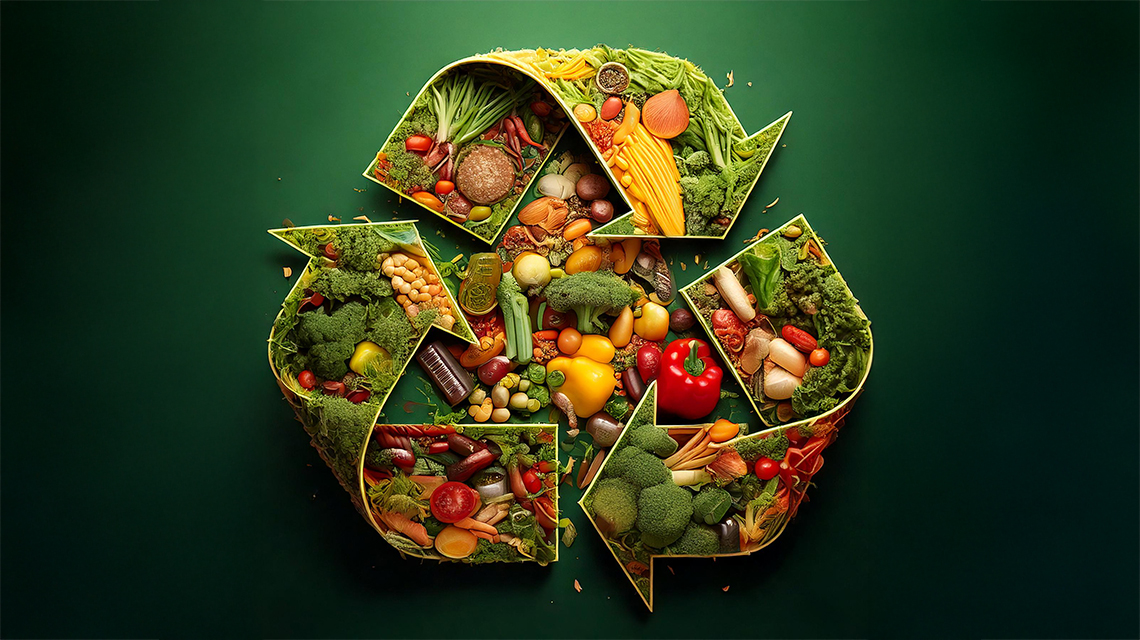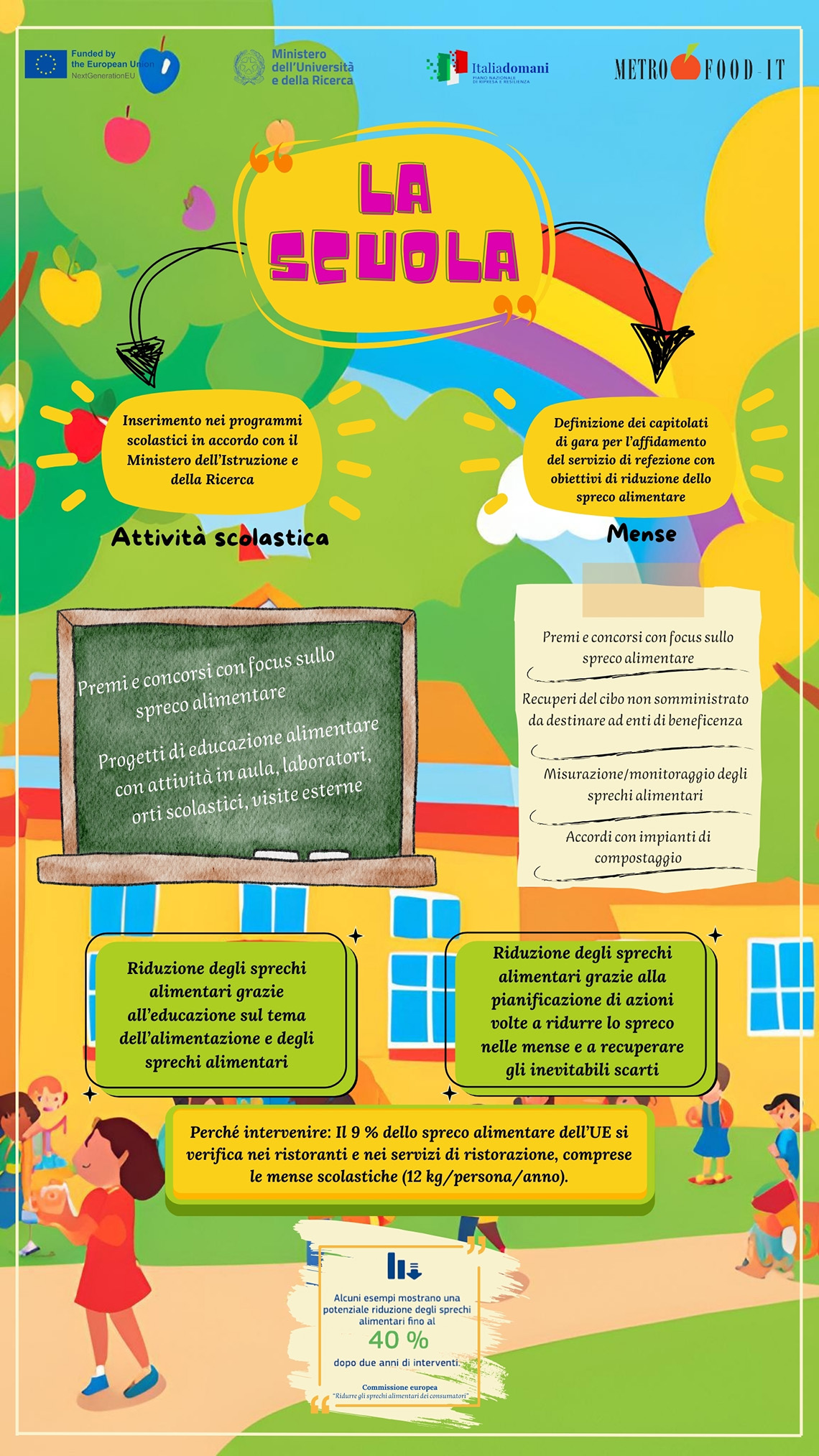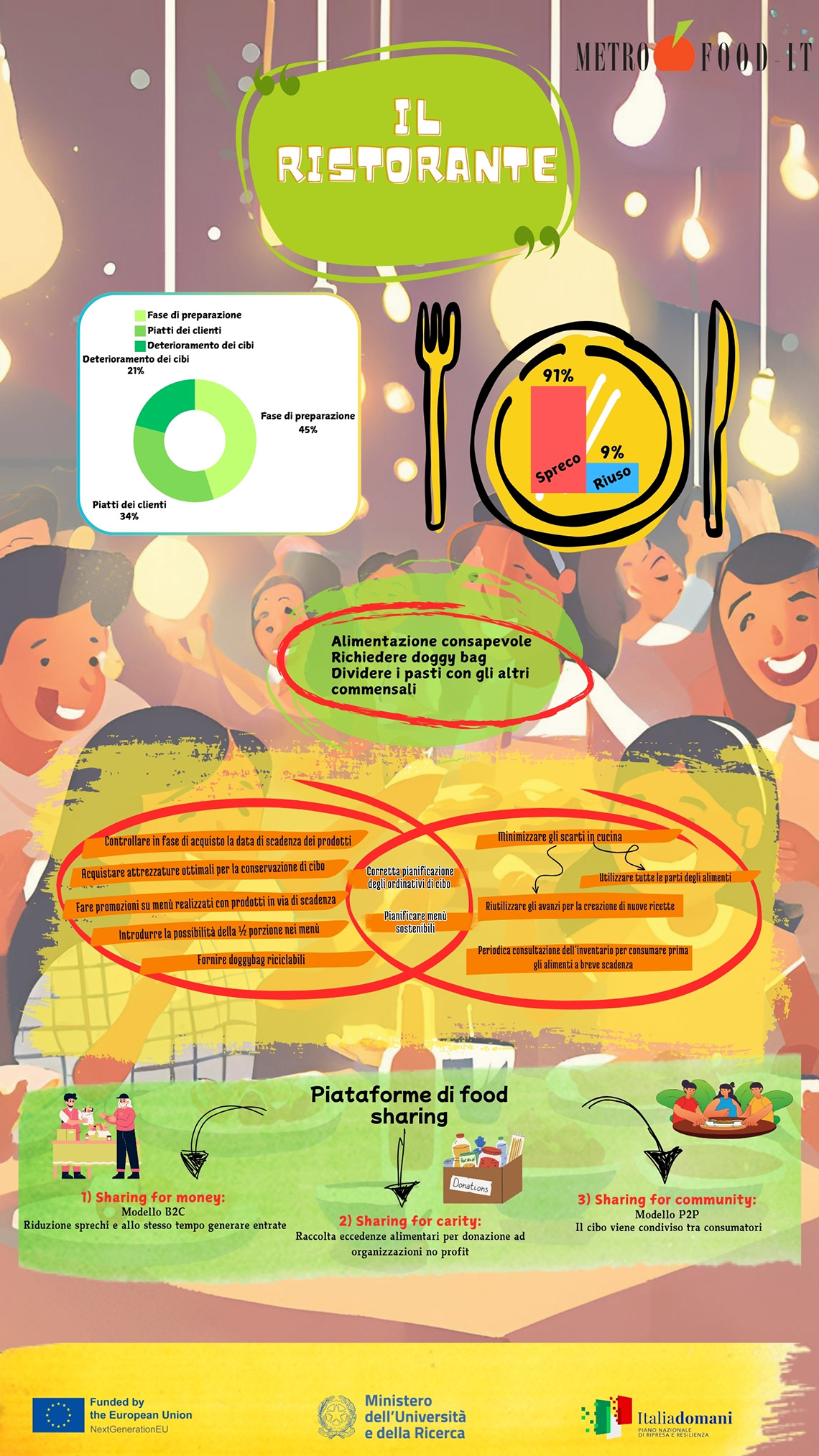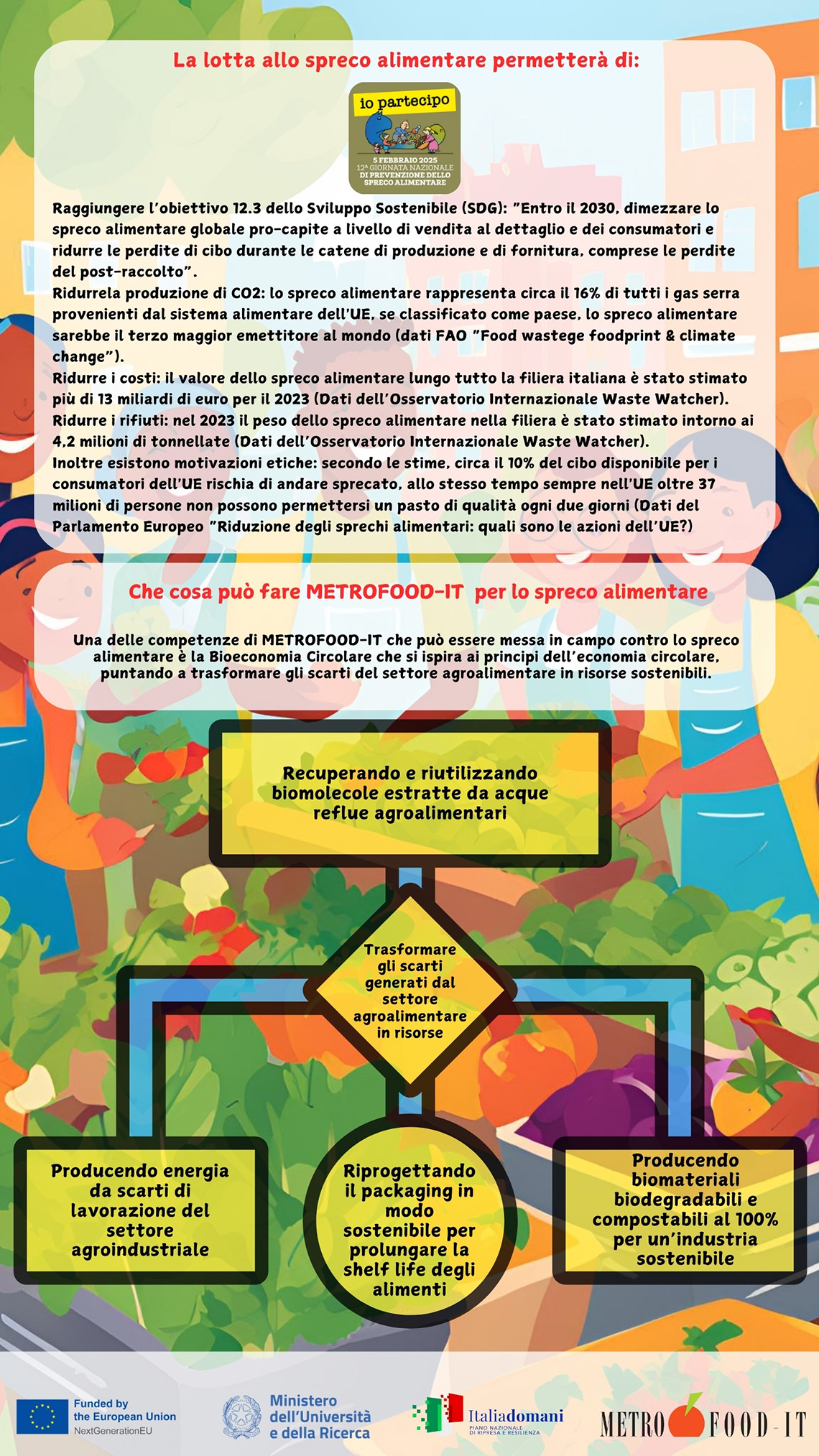Strengthening of the Italian Research Infrastructure for Metrology and Open Access Data in support to the Agrifood
National Food Waste Prevention Day: A Guide from METROFOOD-IT for Consumers and Businesses

On the occasion of the 12th National Food Waste Prevention Day, taking place today, February 5, METROFOOD-IT is presenting a dedicated guide to reducing food waste. This guide is aimed at businesses, policymakers, and consumers, with the goal of promoting more conscious shopping, sustainable consumption practices, more efficient resource management, reuse, and waste valorization.
The guide highlights that in 2024, food waste along the supply chain in Italy has increased by approximately 46% compared to 2023. Among the most wasted foods are fresh fruit, vegetables, and bread (source: Waste Watcher 205 Report). In Europe, total food waste amounted to 59 million tons, with a value of 132 billion euros (on a per capita basis, 70 kg at home and 12 kg in restaurants). The report also emphasizes that, to achieve the goals set by the UN Agenda for Sustainable Development, per capita weekly food waste must be reduced by 54% (from the current 0.68 kg to 0.37 kg).
What Can Be Done
The METROFOOD-IT guide recommends a series of measures for stakeholders in the agrifood sector to reduce food losses in the production system, starting with the promotion of precision agriculture, as well as in school canteens and the food service industry more broadly.
For policymakers, the guide suggests local and school awareness campaigns, tax incentives for businesses donating unsold food, and support for agricultural activities adopting circular economy practices.
Consumers can also take action by:
- Being informed about ingredients and portion sizes before ordering a meal
- Ordering in smaller portions at all-you-can-eat restaurants
- Requesting a doggy bag for leftovers when dining out
- Choosing restaurants that promote anti-waste initiatives or donate surplus food
- Using apps or services to buy end-of-day food at discounted prices
The Role of Scientific Research
Scientific research can also play a crucial role in reducing food waste. With 110 researchers involved across five ENEA Research Centers and eight national institutions, METROFOOD-IT is at the forefront of supporting the adoption of innovative and sustainable solutions in the agrifood system. Their efforts include waste reduction initiatives throughout the entire supply chain, from production to consumption, along with communication and awareness campaigns. One such initiative is the comics In Search of Green Packaging, available in Italian, English, and Czech, aimed at engaging young people in discussions on research and innovation in agrifood and packaging, particularly in finding alternatives to single-use plastics and reducing plastic and microplastic pollution.
"National Food Waste Prevention Day inspired us to create a guide for businesses, policymakers, and consumers, providing practical recommendations to reduce waste," explains Claudia Zoani, Coordinator of METROFOOD-IT. - The guide suggests useful actions to be taken across the food supply chain, at the local level, in schools, at home, and in restaurants, to build a more equitable and environmentally friendly food system. By integrating strategies among producers, distributors, and consumers, we aim to create a more resilient food system, in line with Sustainable Development Goal 12.3 of the 2030 Agenda."
"Food waste has a significant environmental impact, consuming vital resources such as water, soil, and energy, while generating greenhouse gas emissions that drive climate change," emphasizes Chiara Nobili from ENEA’s Sustainable Agrifood Systems Division. "It is essential to work towards sustainable development goals and cut per capita food waste in half by 2030—not only to ensure greater food availability but also to reduce costs and mitigate the environmental impact of food production and consumption. This aligns with the Farm to Fork strategy and the EU’s binding targets for food waste reduction by 2030: a 10% reduction in processing and manufacturing waste and a 30% (per capita) reduction in restaurant and household waste."
while here you can download additional factsheets








